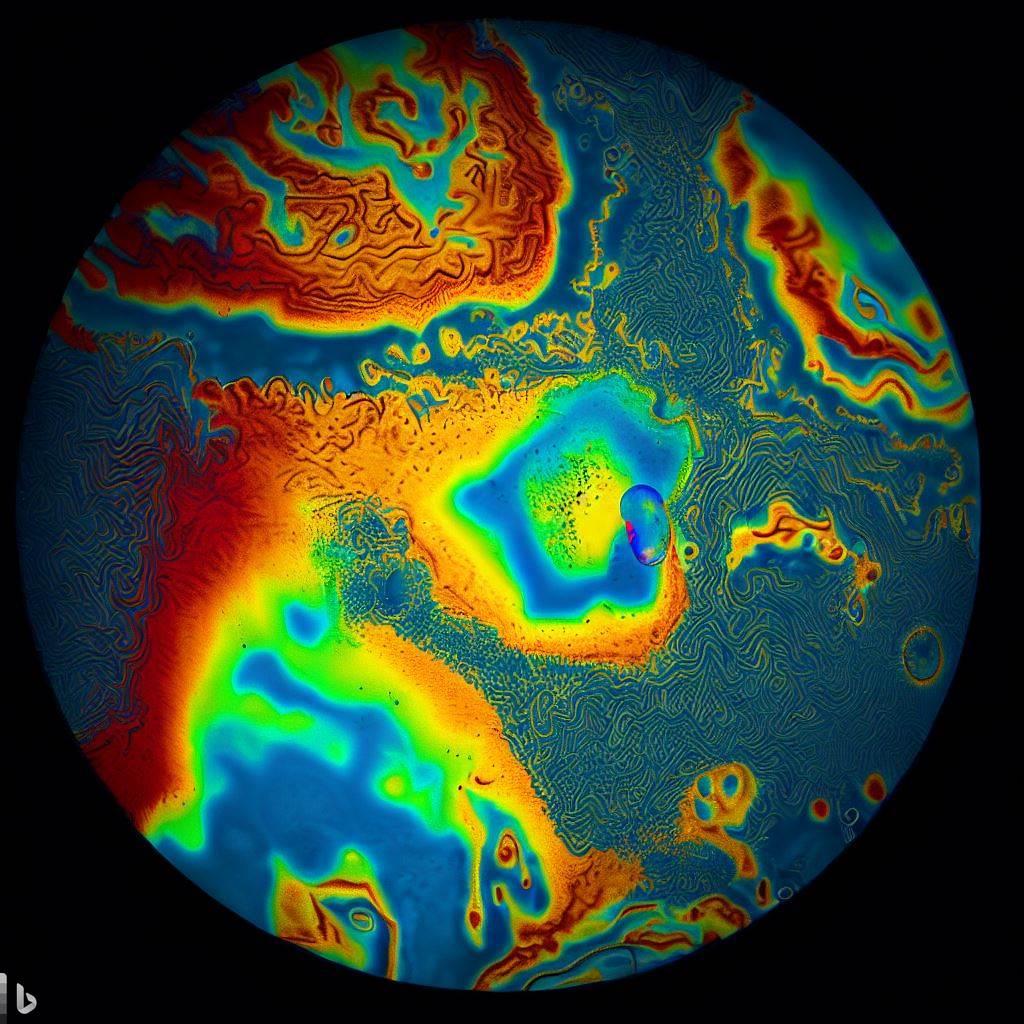Introduction:
Venus, our neighboring planet, has long captured the imagination of scientists and stargazers alike. As the second planet from the Sun and similar in size to Earth, Venus has beckoned us to uncover its enigmatic secrets. In this comprehensive blog, we will embark on a mesmerizing journey to explore the mysteries of Venus, delving into its intriguing features and uncovering the secrets that lie beneath its thick atmosphere.
1: Venus' Cloud-Covered Veil
Venus, known for its dazzling presence in the night sky, is often shrouded in a thick layer of clouds. These clouds, composed mainly of sulfuric acid droplets, create a dense and opaque barrier that prevents us from directly observing the planet's surface. The veiling of Venus' surface has posed a significant challenge for scientists seeking to unravel its mysteries.
However, through advancements in space exploration, we have managed to peer through this cloud-covered veil and gain valuable insights into the nature of Venus. Remote sensing missions, such as the Magellan spacecraft, have employed radar imaging to map the planet's surface and provide detailed topographic information. By bouncing radio waves off the surface and analyzing the returning signals, scientists have unveiled a terrain characterized by vast plains, highland regions, and intriguing geological features.

2: The Greenhouse Effect and Venus' Extreme Temperatures
One of the most captivating aspects of Venus is its scorching temperatures, making it the hottest planet in our solar system. The extreme heat can be attributed to Venus' greenhouse effect, a phenomenon caused by its dense atmosphere and high concentration of carbon dioxide (CO2).
Venus' atmosphere is predominantly composed of CO2, with trace amounts of other gases such as nitrogen and sulfur dioxide. The thick atmosphere acts as a greenhouse, trapping solar radiation and preventing it from escaping back into space. This trapped heat leads to a runaway greenhouse effect, resulting in the blistering temperatures observed on the planet's surface.
Surface temperatures on Venus can soar up to a staggering 900 degrees Fahrenheit (475 degrees Celsius), which is hotter than the surface of Mercury, despite Venus being farther from the Sun. The intense heat creates a hostile environment with corrosive gases, high pressures, and an inhospitable landscape. Understanding the mechanisms behind this extreme greenhouse effect on Venus provides valuable insights into Earth's own climate system and the potential consequences of unchecked greenhouse gas emissions.

3: Composition of Venus' Atmosphere
To comprehend the dynamics of Venus' atmosphere and its role in shaping the planet's environment, scientists have meticulously studied its composition. The predominant component of Venus' atmosphere is carbon dioxide, accounting for approximately 96% of the total gas composition.
In addition to carbon dioxide, Venus' atmosphere contains trace amounts of other gases, including nitrogen, sulfur dioxide, and water vapor. These components, although present in small quantities, play a significant role in influencing the atmospheric chemistry and the planet's climate. The presence of sulfur dioxide, for instance, contributes to the formation of the sulfuric acid clouds that enshroud Venus.
Understanding the composition of Venus' atmosphere allows scientists to gain insights into its origin, evolution, and potential habitability. By comparing the atmospheric compositions of Venus and Earth, we can unravel the factors that have shaped these two neighboring planets and the paths they have taken on their respective journeys.

4: Lessons from Venus' Runaway Greenhouse Effect
Venus serves as a cautionary tale and a laboratory for studying the consequences of a runaway greenhouse effect. By examining the mechanisms that have driven Venus' extreme greenhouse conditions, scientists gain valuable insights into the potential future of Earth's climate.
The stark differences between Venus and Earth lie not only in their atmospheric compositions but also in their respective distances from the Sun. Venus, being closer to the Sun, receives higher solar radiation, exacerbating the greenhouse effect. However, the similarities in their atmospheric compositions prompt scientists to analyze the potential outcomes of increasing greenhouse gas emissions on Earth.
Through research and modeling, scientists have observed the potential feedback loops and amplifying mechanisms that can intensify a greenhouse effect. Studying Venus provides us with a stark reminder of the importance of addressing climate change and implementing sustainable practices to mitigate the risk of Earth's climate spiraling out of control.
5: Probing Venus' Atmosphere: Missions and Discoveries
Humanity's quest to uncover the secrets of Venus has been fueled by a series of remarkable space missions. Over the years, a diverse range of spacecraft and probes have been sent to study Venus, each contributing to our understanding of this mysterious planet.
From the first flyby missions, such as Mariner 2 in 1962, to more recent missions like the European Space Agency's Venus Express and Japan's Akatsuki, each mission has provided unique insights into Venus' atmosphere, surface, and geological features. These missions have allowed us to gather data on temperature variations, atmospheric dynamics, cloud formations, and volcanic activity.
The discoveries made through these missions have challenged previous assumptions and led to the formulation of new hypotheses. For example, the detection of phosphine gas in Venus' atmosphere has sparked excitement and raised questions about the possibility of microbial life existing in the planet's clouds.

Conclusion
Venus, with its thick cloud cover, extreme temperatures, and unique atmospheric composition, continues to captivate scientists and ignite our curiosity. Through a combination of remote sensing, modeling, and space missions, we have made significant strides in unraveling the mysteries of this neighboring planet.
Studying Venus not only enhances our knowledge of the solar system but also provides invaluable lessons about our own planet. By understanding the mechanisms driving Venus' runaway greenhouse effect, we gain insights into the potential consequences of climate change on Earth.









Add a Comment: